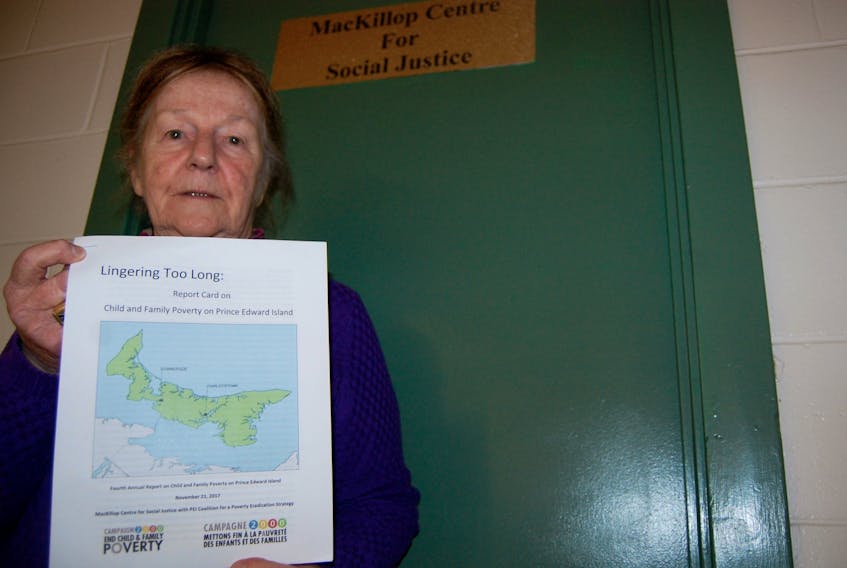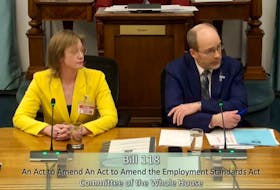When Mary Boyd hears officials and politicians describing poverty as a “complex” issue, she often shakes her head.
“It’s not nearly as complex as people make it to be. It’s pretty straightforward. Wages and government policies are insufficient and people are suffering as a result,” says Boyd, director of the MacKillop Centre for Social Justice (MCSJ).
The centre and the Coalition for a Poverty Eradication Strategy for P.E.I. recently released their fourth annual Report Card on Child and Family Poverty on P.E.I.
The latest statistics for P.E.I. show a very mild improvement in child poverty since 2014, when the rate was 17.8 per cent. In 2015, the latest numbers that were available for the report card, it dropped to 17.4 per cent. The poverty rate on P.E.I. for children under six-years-old dropped from 21.5 per cent in 2014 to 20.18 per cent in 2015.
Boyd, the author of the report, said she feels in order to see significant change it is imperative the provincial government move to implement a poverty eradication strategy. P.E.I. has promised a Poverty Reduction Strategy (PRS) since 2015, while the federal government plans to release a report on one in 2018.
“The word reduction is very problematic. There’s no commitment there to get to the root causes of poverty,” said Boyd.
The report card points out that in a survey of food insecure households for 2014, updated in May 2017, P.E.I.’s food insecurity rate was 61.3 per cent. Children who live in the highest percentage of food insecure households were found to be from Nunavut, Northwest Territories, P.E.I., Nova Scotia and New Brunswick. The authors of the survey concluded the most serious food insecurity problems are in the northern part of Canada and the Atlantic provinces.
oyd also said poverty nationwide afflicts immigrant and Indigenous populations the most. Census data for P.E.I. showed that of the 700 people of Indigenous identity who make the Island their home, 36.4 per cent are low income.
Another issue the 10-page report raises concerns with is the minimum wage in P.E.I. The report recommends government continue to raise the provincial minimum wage until it reaches a living wage of at least $15 per hour.
“How can somebody put in a full day’s or week’s or month’s or year’s work and still be in poverty? What kind of a society allows that?” said Boyd.
In the report, a breakdown of child poverty in children ages 0-17 in P.E.I. electoral districts revealed that lone-parent families have the highest rates of poverty in those districts. Boyd said one of the many changes that would help bring those rates down are affordable, publicly funded programs in daycare, pharmacare and dental care.
“It should be part of Medicare anyway. It was intended to be by Tommy Douglas. And that hasn’t happened. We’re the only country in the world with a public healthcare system that doesn’t have a pharmacare program as part of that,” said Boyd.
She pointed out the Canada Child Benefit introduced federally in 2016 is an encouraging sign towards the fight against poverty, but recommends the benefit be redesigned to reduce poverty by 50 per cent by 2020.









